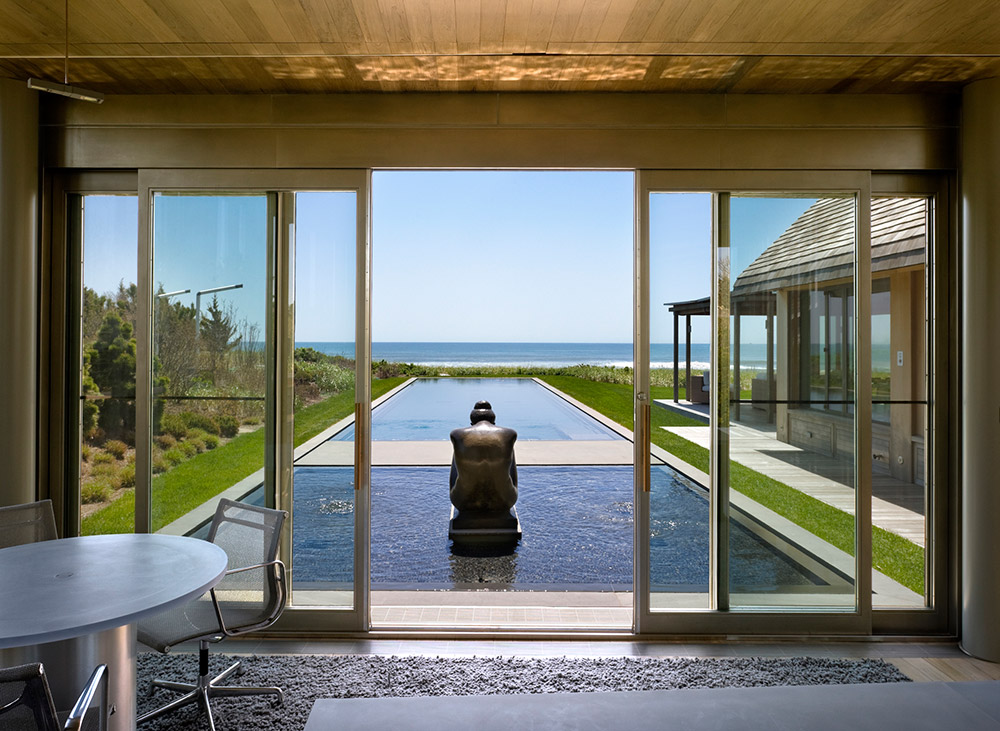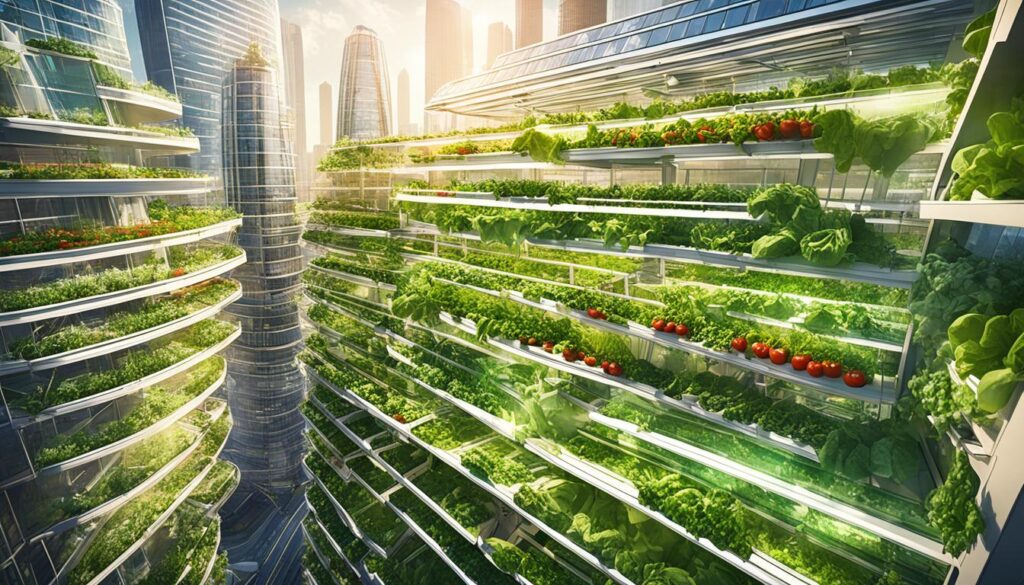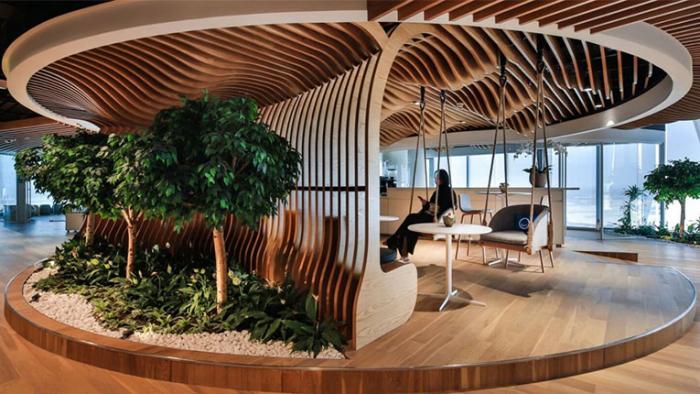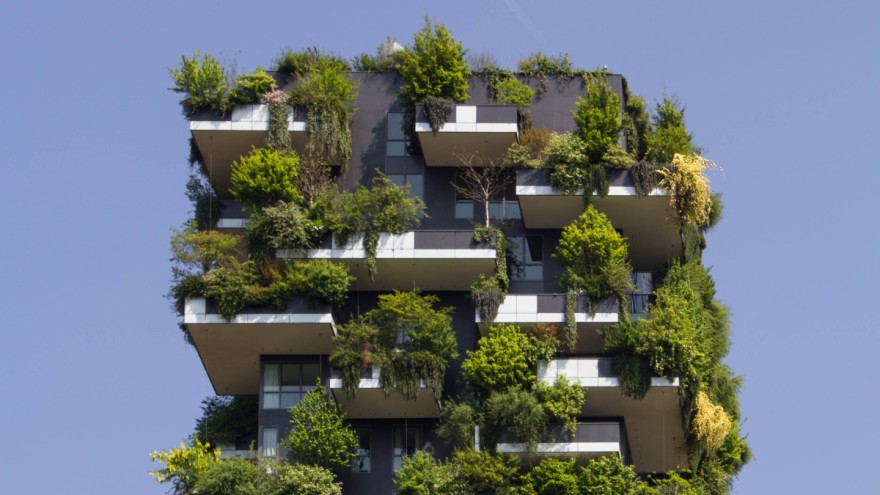Unveiling the Benefits of Water Bodies in Biophilic Design
**Biophilic design** focuses on creating environments that promote a profound connection between individuals and nature, thereby enhancing well-being and fostering sustainability.
A particularly compelling aspect of this design philosophy is the incorporation of **water bodies**, which not only enhance the aesthetic appeal of a space but also provide numerous psychological and ecological benefits.
This discussion delves into the essence of **biophilic design**, the critical role that **water bodies** play within this context, practical methods for their integration into various environments, and potential challenges that may arise.
We invite you to explore the transformative impact of **water** in nature-inspired design.
What is Biophilic Design?
Biophilic design represents a progressive approach within architecture and urban planning that aims to cultivate a deep connection with nature. This methodology enhances not only the aesthetic value of spaces but also promotes ecological sustainability and psychological well-being.
By incorporating natural elements such as light, vegetation, and water features into constructed environments, biophilic design aspires to create restorative settings that enrich human experiences while honoring the natural ecosystem.
This approach is grounded in principles from environmental psychology, underscoring the significance of sensory experiences and emotional health in our engagement with the surrounding environment.
Why is Biophilic Design Important?
Understanding the significance of biophilic design is crucial, as it has a profound impact on individuals’ psychological well-being and fosters a healthier relationship between humans and their environment.
In an era characterized by urbanization and a growing disconnection from nature, the integration of biophilic elements into architecture and urban planning has become an essential strategy for enhancing community health, improving air quality, and contributing to ecological sustainability.
Research indicates that environments designed with natural light, green spaces, and water features not only enhance aesthetic appeal but also provide substantial health benefits, promoting emotional well-being and reducing stress levels.
What are the Benefits of Biophilic Design?
Biophilic design encompasses a wide array of benefits that transcend aesthetic considerations, positively influencing psychological well-being, environmental sustainability, and community engagement.
The incorporation of natural elements, such as plants, water features, and natural light, within built environments contributes to enhanced emotional health, improved air quality, and increased biodiversity.
Furthermore, biophilic design practices facilitate community engagement by creating inclusive outdoor spaces that encourage social interactions, thereby enriching the urban experience and promoting environmental awareness and stewardship.
By integrating features such as green roofs and urban gardens, these designs not only mitigate the urban heat island effect but also provide essential ecosystem services, including pollination and stormwater management.
Access to nature has been associated with reduced stress levels and enhanced focus, thereby encouraging healthier lifestyles and fostering overall community health. In neighborhoods that incorporate biophilic elements, there is often an increase in outdoor activities, which promotes physical well-being and social cohesion.
Moreover, enhancing biodiversity through the integration of native plants contributes to the resilience of local ecosystems, ensuring robust environments that benefit both human populations and wildlife alike.
The Role of Water Bodies in Biophilic Design
Water bodies are integral to biophilic design, functioning not only as aesthetically pleasing elements but also as essential components that enhance ecological sustainability and contribute to the overall health of urban environments.
The incorporation of water features in landscape architecture facilitates tranquility, improves water quality, and assists in stormwater management, thereby creating habitats for diverse aquatic ecosystems and fostering biodiversity.
By integrating reflective surfaces and designing spaces that encourage human-nature interaction, water bodies offer sensory experiences that connect individuals to their natural surroundings, ultimately promoting psychological well-being.
How Do Water Bodies Enhance Biophilic Design?
Water bodies significantly enhance biophilic design by providing emotional and sensory experiences that foster a deeper connection between individuals and their environment. By incorporating water features such as ponds, fountains, and streams, designers create immersive environments that evoke feelings of tranquility and promote psychological well-being.
The sound of flowing water, coupled with its visual appeal, contributes to a restorative landscape that not only supports ecological sustainability but also enriches community health and engagement.
These elements extend beyond mere decoration; they serve to stimulate the senses, establishing a harmonious blend of sight, sound, and touch that reinforces an individual’s bond with nature. The gentle trickle of water can effectively reduce stress levels, while reflective surfaces encourage contemplation and relaxation, making spaces more inviting.
Furthermore, the integration of such features promotes biodiversity by creating habitats that sustain various forms of wildlife. Ultimately, water bodies function as therapeutic sanctuaries, facilitating emotional healing and fostering a sense of belonging within vibrant, interconnected ecosystems.
What Types of Water Bodies are Used in Biophilic Design?
The types of water bodies employed in biophilic design are varied and encompass natural swimming pools, ponds, constructed wetlands, and reflective pools, each serving distinct functions and offering specific benefits.
These water features not only enhance the visual connectivity of outdoor spaces, but they also support habitat diversity and contribute to effective stormwater management strategies. By judiciously selecting the appropriate types of water bodies, designers can create environments that foster ecological sustainability while providing recreational and aesthetic value.
Incorporating elements such as rain gardens and bioswales into urban landscapes further enhances the functionality of these water bodies, delivering essential filtration services that improve water quality.
Natural swimming pools promote healthy aquatic ecosystems, allowing users to swim without the use of chemical treatments. Conversely, reflective pools not only provide a tranquil aesthetic but also serve as cooling features in warmer climates, mitigating urban heat effects.
Ultimately, the intentional integration of various water bodies contributes to a multifaceted ecosystem that supports diverse wildlife and promotes the overall well-being of the community.
Examples of Biophilic Design Using Water Bodies
Numerous examples of biophilic design exemplify the effective integration of water bodies, demonstrating how water features can enhance the urban experience and promote environmental sustainability.
Urban parks featuring natural swimming pools and office buildings with reflective water surfaces serve as case studies illustrating the potential of water bodies to improve landscape architecture and contribute to psychological well-being.
By incorporating these elements, designers can create immersive environments that cultivate a profound connection to nature while providing functional advantages.
1. Incorporating Water Features in Indoor Spaces
Incorporating water features into indoor spaces is a highly effective strategy in biophilic design, as it enhances natural light, creates sensory experiences, and promotes wellness architecture. Elements such as indoor fountains, aquariums, or water walls not only enhance aesthetic appeal but also contribute to improved air quality and emotional health, fostering a serene atmosphere that soothes and rejuvenates occupants.
This design principle encourages a seamless connection between interior environments and nature, thereby reinforcing the tenets of biophilia.
By thoughtfully integrating these elements, one can transform an ordinary space into a vibrant oasis that encourages tranquility and mindfulness. For example, the gentle sound of flowing water can function as a natural stress reliever, promoting relaxation and enhancing focus, while strategically positioned aquariums can serve as living art installations that engage the senses.
Moreover, the introduction of natural light amplifies the visual impact of water features, allowing the playful reflection and refractive qualities of water to invigorate the environment. Beyond their aesthetic contributions, these installations offer psychological benefits, supporting overall well-being and environmental sustainability through increased humidity and improved oxygen levels.
2. Creating Natural Swimming Pools
Natural swimming pools exemplify an innovative approach that integrates recreational opportunities with ecological sustainability within the framework of biophilic design. These pools employ natural filtration systems and vegetation to sustain water quality, thereby creating habitats for a diverse array of species while offering a serene and immersive swimming experience.
The design of natural swimming pools frequently incorporates local flora and geological features, which not only enhances their aesthetic appeal but also supports the surrounding ecosystem. With a strong emphasis on ecological sustainability, these pools promote biodiversity by serving as sanctuaries for amphibians, insects, and other wildlife, thereby enriching urban environments.
Their recreational value extends beyond swimming; they provide a tranquil setting for relaxation and social gatherings, fostering a deeper appreciation for nature. By utilizing natural materials such as stones and plants, these pools create engaging outdoor spaces that harmonize with the landscape, inviting residents to connect with their surroundings in meaningful and enriching ways.
3. Designing Outdoor Spaces with Water Features
Designing outdoor spaces that incorporate water features exemplifies the principles of biophilic design, enhancing the overall integration of the landscape while fostering community engagement. Elements such as ponds, streams, and fountains contribute to the creation of tranquil environments that encourage social interactions and promote emotional well-being.
By meticulously considering the placement and design of these water features, landscape architects have the opportunity to develop spaces that not only enhance the aesthetic appeal but also fulfill essential ecological functions, including habitat creation and stormwater management.
This thoughtful approach to design incorporates natural elements that can significantly improve the quality of life within communities. As residents gather around these serene water features, they are afforded the opportunity to appreciate their visual appeal while engaging in recreational activities and community events, thereby strengthening social connections.
Additionally, the incorporation of native plants around water features can enhance biodiversity and create a hospitable environment for local wildlife, effectively bridging the divide between urban development and natural ecosystems.
Ultimately, the strategic integration of water features within park design not only elevates the landscape but also fosters a collective appreciation for nature, promoting sustainable practices and encouraging environmental stewardship within the community.
How to Incorporate Water Bodies into Biophilic Design
Incorporating water bodies into biophilic design necessitates meticulous planning and consideration of multiple factors, including site selection, water management, and adherence to sustainability principles.
Effective integration begins with a comprehensive assessment of the ecological context of the site, an understanding of the hydrology, and a commitment to ensuring that water features enhance the surrounding landscape without compromising environmental integrity.
By prioritizing sustainable practices and implementing thoughtful design, architects and urban planners can create spaces that establish meaningful connections between individuals and nature, while simultaneously contributing to ecological health.
1. Consider the Location and Climate
Incorporating water bodies into biophilic design necessitates a thorough consideration of the site’s location and climate to ensure the design’s success and sustainability. Various factors, including temperature regulation, local ecosystems, and seasonal weather patterns, significantly influence the types of water features that can be effectively integrated.
By selecting appropriate natural materials and design elements that align with the specific climate conditions, designers can create spaces that enhance thermal comfort and provide ecological benefits.
A comprehensive understanding of the specific environmental conditions, such as humidity levels and wind patterns, is essential for optimizing the design of these water bodies. For example, in arid climates, features such as evaporative pools can contribute to enhanced cooling effects, whereas in humid regions, incorporating flowing water can improve air quality and foster a soothing environment.
The selection of materials that are both sustainable and locally sourced not only minimizes environmental impact but also ensures that the design resonates with the surrounding landscape. Effective site-specific design integrates these considerations to create harmonious spaces that support biodiversity and promote human interaction with nature.
2. Utilize Natural Materials
Utilizing natural materials in the design of water bodies is imperative for promoting sustainability principles and maintaining the ecological integrity of the environment. By incorporating elements such as stone, wood, and native vegetation, designers can create harmonious water features that integrate seamlessly with their surroundings.
This approach not only enhances the aesthetic appeal of the space but also supports local biodiversity and encourages habitat creation, thereby fostering a deeper connection between individuals and nature.
The thoughtful integration of local materials is crucial in reducing the environmental footprint of water body projects. Natural materials contribute to the longevity and resilience of these areas by adapting to climate variations and supporting a wide range of aquatic life.
The use of natural stones effectively stabilizes banks and shorelines, while native plants provide essential food sources and nesting sites for various species, thereby enriching habitat diversity.
Ultimately, the adoption of these sustainable design practices not only enhances the beauty of spaces but also upholds the delicate balance necessary for thriving local ecosystems.
3. Incorporate Plants and Wildlife
Incorporating plants and wildlife into the design of water bodies is essential for enhancing biodiversity and promoting habitat restoration within urban environments. By selecting native plant species and creating environments that attract local wildlife, designers can establish thriving aquatic ecosystems that contribute to the ecological health of the area.
This approach not only fosters a richer sensory experience for users but also supports the broader objectives of biophilic design.
The integration of diverse flora significantly enhances the visual appeal of these spaces and plays a critical role in improving water quality and reducing pollutants. By establishing habitats for native species, urban water bodies can evolve into vital sanctuaries for various forms of wildlife, thereby enriching the local ecosystem.
Consequently, individuals who interact with these spaces can gain firsthand experience of nature, observe wildlife, and develop a deeper understanding of the significance of biodiversity within their communities. This interaction effectively bridges the gap between urban living and nature, underscoring the importance of incorporating ecological considerations into future design efforts.
4. Use Water as a Focal Point
Utilizing water as a focal point in biophilic design establishes a central feature that enhances sensory experiences and promotes place-making within the environment. Water elements, such as fountains and reflecting ponds, attract attention and encourage interaction, thereby fostering emotional well-being and creating memorable spaces for users.
By emphasizing the role of water in the design process, architects can cultivate environments that promote relaxation, reflection, and a deeper connection to nature.
The rhythmic sounds of flowing water have the ability to calm the mind, while the visual allure of shimmering surfaces can captivate observers, offering a sensory respite from the hustle and bustle of urban life. Integrating water not only enhances the aesthetic appeal of a space but also strengthens the relationship between individuals and their surroundings.
This connection can facilitate increased social interaction and community engagement, transforming ordinary areas into vibrant spaces where individuals experience a sense of belonging.
Ultimately, the incorporation of water features into design transcends mere aesthetics; it aims to create holistic experiences that support both emotional and physical well-being.
5. Create a Sense of Movement and Flow
Creating a sense of movement and flow in the design of water bodies significantly enhances the dynamic quality of outdoor spaces and enriches the user experience.
Designers can achieve this through techniques such as fluid dynamics and the strategic placement of water features that guide the eye and create pathways for exploration. This approach not only fosters interaction with nature but also contributes to the overall aesthetic appeal and cohesion of the landscape.
Incorporating dynamic elements, such as rippling fountains or gently flowing streams, encourages users to engage with water in a more tactile manner, thereby promoting a deeper connection to their surroundings.
By embracing principles of experiential design, the integration of movement into biophilic design stimulates the senses and provides calming effects, which can be particularly beneficial in urban environments.
The interplay of light, sound, and water movement fosters a serene atmosphere, inviting visitors to pause and immerse themselves in the tranquil beauty of their environment, ultimately enhancing their overall well-being.
Challenges and Considerations for Using Water Bodies in Biophilic Design
Incorporating water bodies into biophilic design presents numerous benefits; however, several challenges and considerations must be addressed to ensure their successful implementation and long-term sustainability.
The maintenance and upkeep of water features are essential to prevent issues such as water quality deterioration and habitat loss. Furthermore, safety concerns, particularly in public spaces, must be meticulously considered to mitigate risks associated with potential accidents.
Additionally, a comprehensive evaluation of the environmental impact of creating and managing these bodies of water is necessary to promote ecological integrity.
1. Maintenance and Upkeep
The maintenance and upkeep of water bodies within biophilic design are essential for ensuring their longevity, functionality, and ecological health.
Consistent attention to the ecological balance of these environments fosters the diverse aquatic habitats that support a variety of species. Implementing best practices, such as regular sediment removal and nutrient management, can significantly enhance water purity, thereby providing direct benefits to both flora and fauna.
Encouraging community participation in monitoring efforts promotes a sense of stewardship and raises awareness about environmental sustainability. Educators and planners can develop workshops that emphasize the importance of restoring native plants around water bodies, which further contributes to habitat resilience.
Ultimately, diligent maintenance not only improves water quality but also enhances the aesthetic and recreational value of these vital ecosystems.
2. Safety Concerns
Safety concerns associated with water bodies in biophilic design must be systematically addressed to establish secure public spaces that foster community health and wellness.
It is essential to ensure that these spaces are both inviting and safe, as water features can attract individuals of all ages, thereby making the risk of accidents a significant consideration. Designers are advised to incorporate safety-enhancing elements such as non-slip surfaces, strategically placed barriers, and adequate lighting in the vicinity of water bodies.
Engaging the community in the design process can yield valuable insights regarding local perceptions and potential hazards, thereby fostering a collective sense of responsibility toward these environments.
Ultimately, a comprehensive approach that harmonizes aesthetic appeal with practical safety measures can encourage greater public engagement with these spaces, thereby enriching the overall experience of urban life.
3. Environmental Impact
Evaluating the environmental impact of incorporating water bodies into biophilic design is essential for ensuring ecological sustainability and resource conservation.
Designers must consider not only the hydrological dynamics of the area but also the potential effects on local flora and fauna. This meticulous consideration is vital for establishing a balance that promotes biodiversity while preserving the integrity of natural habitats.
Sustainable practices, such as utilizing native plants and implementing rainwater harvesting systems, can significantly enhance the resilience of these environments.
Comprehensive environmental assessments will help identify potential risks associated with water features, ensuring that the resulting designs operate in harmony with the ecosystem rather than disrupt its delicate balance.
Frequently Asked Questions
What is the role of water bodies in biophilic design?
Water bodies play a crucial role in biophilic design as they mimic the natural environment and create a sense of calm and relaxation.
How do water bodies enhance biophilic design?
Water bodies enhance biophilic design by providing visual and acoustic interest, promoting biodiversity, and improving air quality.
What types of water bodies are commonly used in biophilic design?
Commonly used water bodies in biophilic design include ponds, fountains, streams, and waterfalls.
What are the benefits of incorporating water bodies in biophilic design?
Incorporating water bodies in biophilic design has been proven to reduce stress, increase productivity, and improve overall well-being and mental health.
How can water bodies be incorporated into indoor spaces?
Water bodies can be incorporated into indoor spaces through the use of indoor fountains, aquariums, and even water walls.
What should be considered when incorporating water bodies in biophilic design?
When incorporating water bodies in biophilic design, factors such as maintenance, safety, and water conservation should be carefully considered.

I’m Bruno, an architect with a deep passion for Biophilic Design in Urban Architecture. Throughout my career, I’ve focused on integrating natural elements into urban planning, and I created this site to share my insights and foster a deeper understanding of how biophilic principles can significantly enhance urban living. Dedicated to sustainable development, I continually explore innovative design solutions that promote both environmental and human well-being in city landscapes.














Publicar comentário